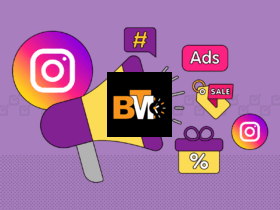Social media is the lifeblood of contemporary communication, influencing public sentiment and propelling the stories that support companies, movements, and brands. However, how can you monitor the never-ending flow of hashtags, posts, tweets, and conversations across platforms? Effective social media monitoring is the solution.
This blog will explain how social media monitoring works and show you how your brand strategy can be changed by comprehending and controlling online chatter. Continue reading to learn how social media monitoring can provide you with the competitive edge you require, regardless of whether you are a marketer, business owner, or simply interested in taking advantage of online trends.
Social Media Monitoring: What Is It?
Let’s define social media monitoring before we go any further. It describes the practice of paying attention to and following social media discussions that are pertinent to your community, business, or brand. This encompasses more extensive conversations about particular terms, trends, and hashtags on various platforms, in addition to mentions from your official account.
For instance, a skincare company may track keywords like “sensitive skin tips” or “best moisturizers” to learn what consumers want and predict market trends.
However, social media monitoring goes beyond simply listening in on conversations. It involves gathering information, evaluating it, and applying the results to make more intelligent choices.
Why Is It Important to Monitor Social Media?
Let’s examine why social media monitoring is essential to your overall plan.
1. Recognize Your Viewers
An invaluable resource for learning about your audience is social media. You can learn about your customers’ preferences, issues, and patterns of behavior in real time by keeping an eye on social media conversations. Are you curious as to why your customers favor one product over another? Wondering if they react better to humorous or sincere advertisements? You can learn that from social monitoring.
Being aware of what people are saying will enable you to establish a deeper connection with them and develop tactics that live up to their expectations.
2. Monitor Brand Image
Your audience’s opinion of your company is directly reflected in your online reputation. Depending on how well a brand manages events on digital platforms, it can trend for both positive and negative reasons. Social media monitoring enables you to spot negative comments before they get out of hand or spot positive trends where your brand is flourishing.
You can respond quickly to user complaints about a product or service, demonstrating to your audience that their opinions are valued. After all, responding to criticism proactively builds rapport and trust for your brand.
3. Keep Up with the Latest Trends
Trends on social media can change quickly. You will lead the conversation in addition to keeping up if you stay ahead of these trends. You can match your content strategy with current trends by keeping an eye on keywords, hashtags, and viral moments. This flexibility encourages interaction and improves the way your company shows up in the feed of your audience.
Being informed enables you to make quick adjustments for maximum impact, whether it’s recognizing new consumer demands or comprehending the emergence of new meme cultures.
4. Compare Yourself to Your Rivals
Monitoring social media involves more than just keeping an eye on yourself. It’s also a great way to monitor what your rivals are doing. This is about learning, not just “spying.” What sort of material appeals to their audience? Do they take more initiative to resolve client concerns?
Monitoring industry participants can help you identify gaps in your strategy or opportunities they may have missed. It’s a great way to improve by contrasting their successes and failures with your tactics.
5. Influence Business Choices
Actionable insights are generated from all of the data collected through social media monitoring. Have you noticed that lengthy response times are a common complaint from customers? Simplify the way you communicate. Observe an increase in the need for environmentally friendly packaging? It’s time to reconsider your materials. You can use social conversation monitoring to get unambiguous signals that direct internal enhancements and even inspire new ideas.
How to Get the Most Out of Social Media Monitoring
How can you become an expert at social media monitoring now that you know how important it is? To incorporate it into your plan, follow these steps:
Keep an eye on Beyond Mentions
Keep an eye on more than just mentions and tags related to your company or brand. Go above and beyond by monitoring industry-related branded and non-branded keywords.
If you’re a tech startup, for example, keep an eye on discussions about new topics like “cybersecurity for small businesses” or “how to optimize cloud storage.”
Track Across Platforms
Depending on the platform, people have different social habits. While Twitter is ablaze with direct opinions, Instagram might offer visually stimulating product feedback. Professional conversations could take place on LinkedIn, and younger demographics might be impacted by TikTok trends. Be sure to keep an eye on the platforms that are important to your target audience.
Keep an Eye on the Competition’s Heartbeat
Examine how rivals interact with their audiences, introduce new goods, and respond to emergencies. Learn from their campaigns, incorporate elements of their successful campaigns into your own, and steer clear of their errors.
Establish SMART objectives.
Determining your goals is essential. Social media monitoring objectives could be tracking campaign performance, identifying customer pain points, or increasing response rates. SMART stands for Specific, Measurable, Achievable, Relevant, and Timely.
Examine and Take Action on Data
It’s one thing to gather data; it’s quite another to analyze and act upon it. Every week or month, set aside some time to go over your social monitoring data and modify your tactics as necessary.
Involve and Humanize
You can use the information you collect to build deep connections with your audience. Directly interact with users, reply to their comments, and express appreciation for favorable evaluations. By utilizing this relationship, you can humanize your brand and maintain a closer relationship with your target audience.
Open the Wider View
Monitoring social media involves more than just keeping tabs on conversations. Social media monitoring is about getting to know your audience, meeting their needs, and making a name for yourself in your field. It involves taking action based on insights to create an impact and establish genuine relationships that result in enduring brand loyalty.
Begin monitoring properly now, and see how your efforts transform data into decisions, which in turn lead to historic outcomes for your brand.






Leave a Reply